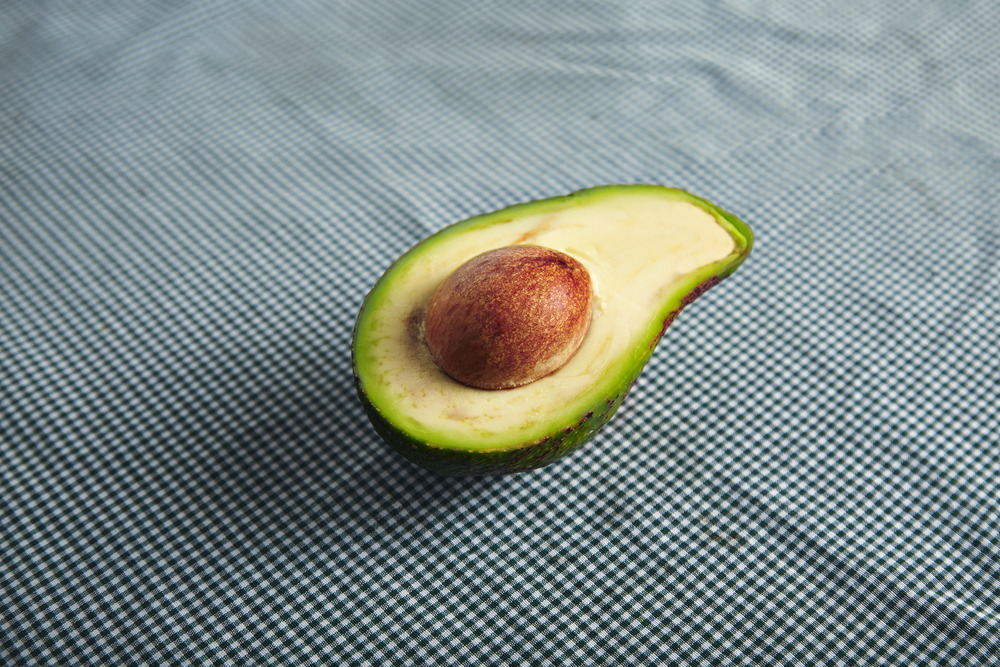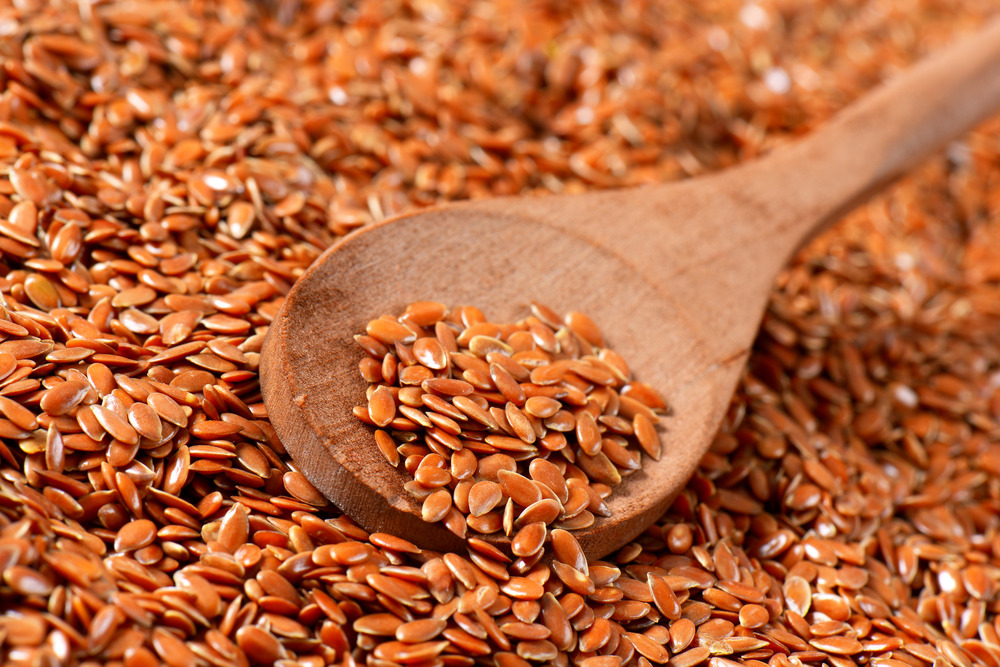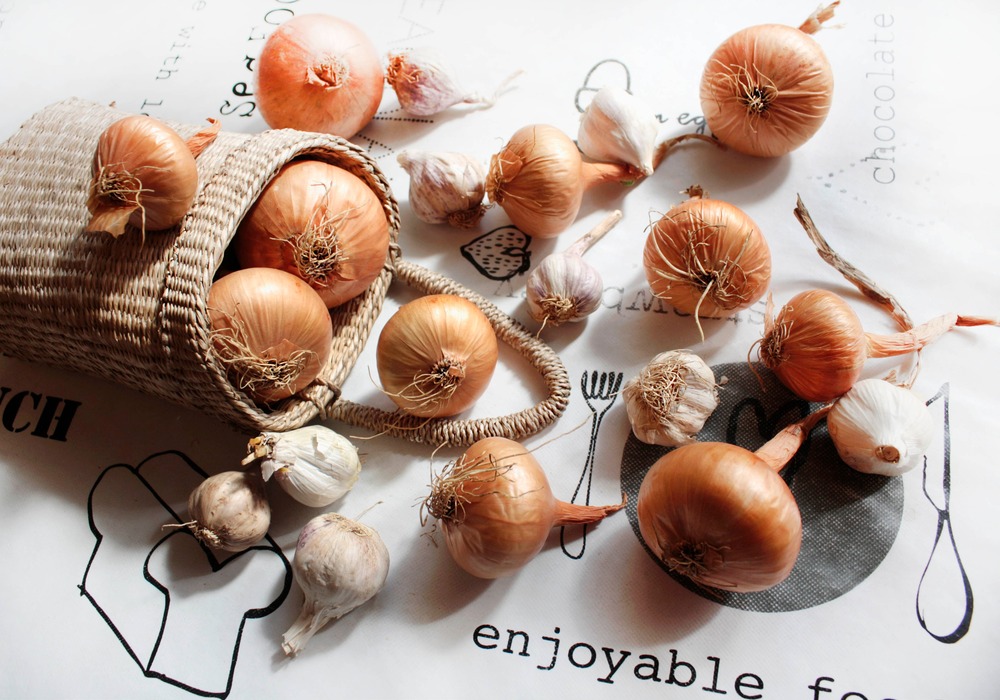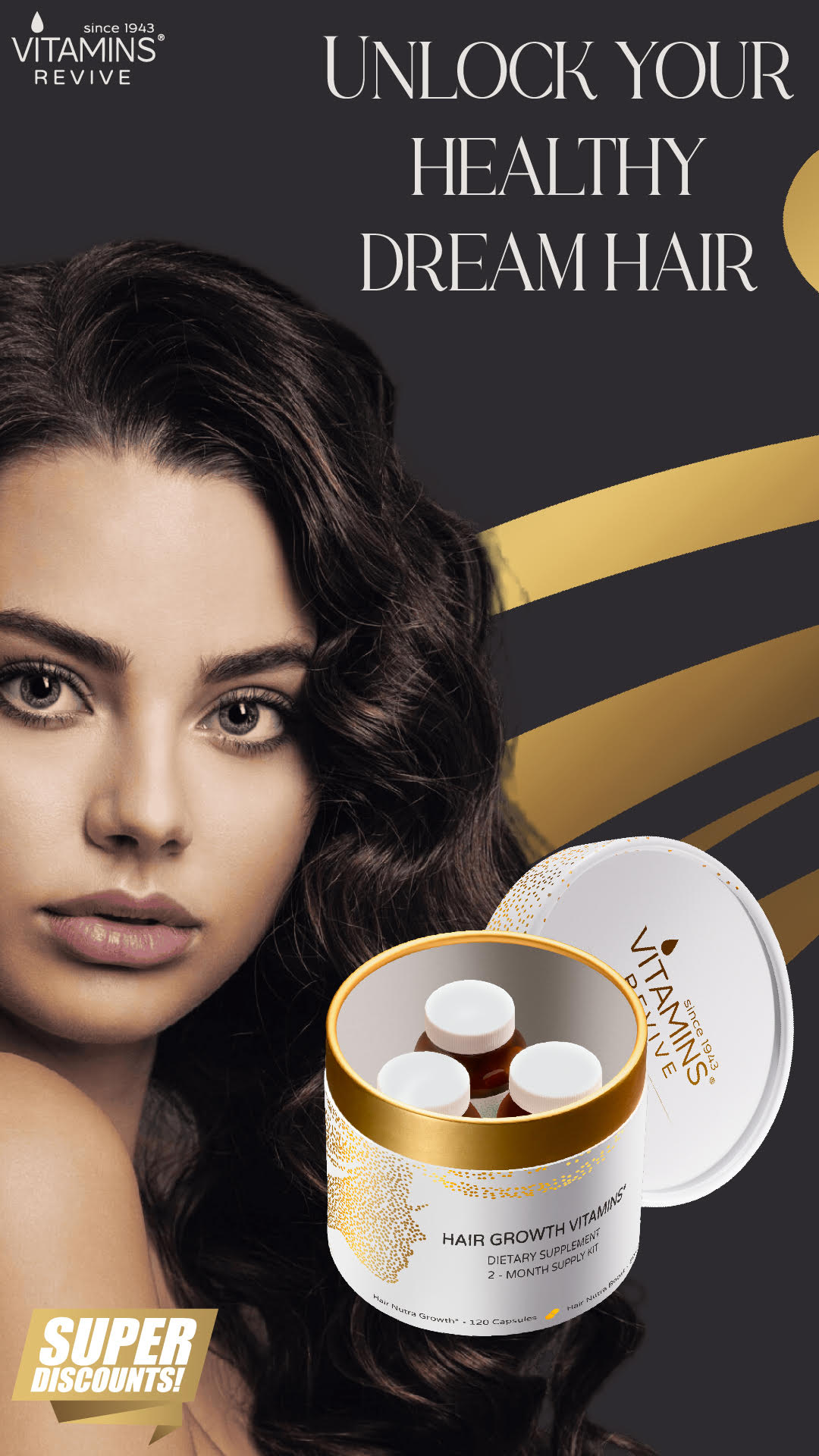
Everyone has their go-to hair mask when it comes to nourishing and replenishing hair, but let’s face it – they can be too costly for regular use.
Lucky for us, when our store-bought masks run out, we can make homemade ones with ingredients found in most households. These DIY hair masks work to nourish and repair split ends from the likes of coloring products, hot tools, salt water, or even chlorine exposure.
8 DIY Hair Mask Recipes for Regrowth
Let’s take a look at a few DIY hair masks that are made using natural ingredients and stimulate hair regrowth, strengthen thinning hair, soothe damaged hair, etc.
1. DIY Vegan Banana Hair Mask

A three-ingredient mask that can do wonders for your hair, this DIY hair regrowth mask will leave your hair shiny and healthy.
What You’ll Need
- Shallots – 1 Cup
- Banana – 1
- Olive Oil – 1/4 Cup
How To Make
- Peel and chop the banana and add it to a bowl.
- Mash with a fork or set aside.
- Peel the shallots and add them to your mixer.
- Grind to a fine paste – you can use it as is or filter out the juice.
- Once the shallots are ready, throw in the banana pieces (if grinding).
- Run it once and transfer it to a mixing bowl.
- Add olive oil to the onion and banana mixture and mix to combine.
How To Use
Apply this banana hair mask on your scalp and hair and massage gently as you go.
Don’t forget to cover the tips and apply liberally where the hair is dry.
Cover your head with a shower cap and let the mask sit for at least 25 minutes.
Wash off, condition, and let your hair air dry.
Notes
You can add a few drops of castor oil to strengthen your hair.
You can finish off with an ACV rinse. Use unfiltered apple cider vinegar for best results.
You can use large onions if you don’t get shallots.
2. DIY Vegan Avocado Hair Mask

This is another mask that uses bananas, and that might come as a surprise to some. Nutrient-rich, this humble fruit is a power-packed home remedy not only to get shiny hair and moisturize it, but it also nourishes hair roots and promotes hair growth.
Combined with Avocado, another nutritional powerhouse for hair and rich in essential fatty acids, and the hair herb Ginkgo Biloba, you have what it takes to jumpstart hair regrowth and curb frizzy hair. Let’s look at the recipe, shall we?
What You’ll Need
- Banana – 1
- Avocado – 1
- Ginkgo Biloba Concoction – 1 – 2 Tbsps.
- Peppermint Essential Oil – 3 Drops
How To Make
- Peel and chop the bananas – go with ripe ones.
- Scoop out the flesh from the avocado (ripe) and throw it in with the banana.
- You can mash it with a spoon or fork or run it in your blender. A smooth paste is easier to apply and rinse off, so I usually go with my blender, even for ripe fruits.
- In a bowl, bring a cup of water to a boil and throw in a handful of Ginkgo Biloba Leaves. Let it simmer till it reduces in quantity really well. You can use fresh or dried leaves.
- Filter and set aside to cool – alternatively, you can grind the raw leaves and use them, especially when you get fresh ones.
- Once the concoction cools down, add it to the fruit paste.
- Add in peppermint essential oil and mix well.
How To Use
Gently massage the hair mask to your hair, making sure to cover it from root to tip.
Gently massage as you go all over the scalp to stimulate blood circulation to the scalp.
Wear a shower cap and wait for half an hour at least before washing off.
Condition and let your hair air dry.
Notes
You can also use natural Ginkgo Biloba extract that’s now available in stores instead of preparing the concoction.
You can also use Horsetail Extract, Ginseng or Burdock extracts along with or either or in this recipe.
If your hair loss stems from hormonal imbalance Stinging Nettle extract or Saw Palmetto extract can help offset that and promote hair growth by blocking excess DHT production that triggers hair loss.
You can finish off with a clarifying apple cider vinegar rinse.
3. DIY Gooseberry Hair Mask

Rich in Vitamin C, flavonoids, and antioxidants, gooseberries are a mainstay in hair care products in some countries. Combine that goodness with other beneficial ingredients for a nourishing and hair growth-boosting DIY hair mask.
What You’ll Need
- Gooseberry – 3
- Coconut Oil – 4 Tbsps.
- Hair Fruit Powder – 1 Tbsp.
- Castor Oil – 1/2 Tsp.
How To Make
- Chop gooseberries into small pieces and set aside. You can discard the seeds or use them – if you’re using them, crush them into small pieces in a mortar and pestle. The seeds are equally nutrient-rich.
- Heat organic unrefined coconut oil and castor oil in a heavy-bottomed pan on low heat.
- When hot, add gooseberry pieces along with the crushed seeds.
- Add shikakai or hair fruit powder (get the coarsely ground variety) to the oil.
- Once the spluttering and foaming stop, remove from heat.
- Once it cools down, filter and transfer to a dark amber glass (if stored) or a bowl to use immediately.
How To Use
Apply the coconut oil mask by gently massaging it to your scalp and hair shaft all over to the tips.
Wrap a warm towel, especially if you only have an hour to or can’t soak in longer than that.
Alternatively, if you can soak in overnight, it’s the best.
Wash off with a clarifying shampoo, condition, and air dry.
Notes
You can use this coconut oil hair mask once a week for stronger hair and healthy hair growth.
This is one of the best DIY hair masks, as it nourishes and strengthens hair follicles and improves hair regrowth.
Gooseberry is known for combating inflammation and reversing premature graying of hair.
4. DIY Vegan Flax Seeds Gel

You can use this as your styling hair gel or as a hair mask. It’s nourishing, improves hair elasticity, and promotes healthy hair.
As a hair mask, you can tweak it to add more ingredients, and we will see that at the end of the recipe.
What You’ll Need
- Flax Seeds – 1/2 Cup
- Lemon – 1
- Burdock Extract – 1 Tsp.
- Cedarwood Essential Oil – 7 Drops
How To Make
- Soak flax seeds overnight in 1/2 – 1 cup of water.
- Bring the soaked flaxseeds to a boil and let it simmer till it thickens – you can add more water if needed and let it simmer.
- Once it cools down a little, squeeze the lemon juice into it and mix well.
- Combine cedarwood essential oil and burdock extract in a small glass jar and shake to combine.
- Filter the gel and add it to this jar, and mix or whisk with a hand blender to combine.
How To Use
Apply the gel mask all over your scalp and hair and let it sit overnight.
Wash off, condition, and airy dry your hair.
You can finish off with an apple cider vinegar rinse for shiny locks.
Notes
If you don’t like the Burdock extract smell, you can skip it.
You can also use this as your hair gel.
If you have oily hair or greasy hair, this is great to curb excess oil.
5. DIY Honey Hair Mask

A simple but nourishing and moisturizing mask, this DIY hair mask can help combat dry, frizzy, and lifeless hair.
What You’ll Need
- Castor Oil – 4 Tbsps.
- Organic Raw Honey – 2 Tbsps.
How To Make
- Add both honey and castor oil to a bowl.
- Just warm up the castor oil and honey slightly in a double boiler.
How To Use
Gently massage the castor oil hair mask to your hair and scalp.
Once you’ve covered your hair strands all the way to the tips, wrap up your head with a shower cap.
Let the mask sit for a good 30 minutes.
Rinse off with warm water.
Shampoo and condition as usual.
Notes
This mask is suitable for any hair type – normal hair to dry or damaged hair.
It can also soothe and treat dry scalp and frizzy hair and restore lost shine.
The castor oil in this recipe helps promote hair growth and improves hair regrowth.
If the mixture is thick, you can also add some almond oil to make it easier to apply.
6. DIY Vegan Hibiscus Hair Mask

Rich in antioxidants, hibiscus leaves, and flowers are used for hair care extensively. If you can find this or get access to this herb, this DIY hair mask is a must-try for improving hair regrowth.
What You’ll Need
- Hibiscus Leaves – 2 Handfuls
- Chinese Hibiscus Flowers – 7
How To Make
Method – 1
- You can add the hibiscus leaves and flowers to a bowl and cover with water.
- Let it boil and simmer for a few minutes.
- Filter the mixture into a bowl.
Method – 2
Grind both the leaves and flowers to a paste.
How To Use
If you’re following method 1, apply the resulting mixture to your hair and scalp and cover your head with a warm towel.
Wait for at least 30 minutes before washing off.
If you’re following method 2, apply the hibiscus paste on your hair and scalp and make sure to cover all the way to the tips.
Let it sit for at least 25 minutes before washing off.
Notes
You can add soaked and ground fenugreek seeds to this recipe.
For best results, wash off with a paste made of shikakai or hair fruit powder and soap nut powder. Rinse off with rice water and air dry your hair. You can get hair wash powder or shikakai powder in stores.
7. DIY Garlic And Onion Hair Mask

Both onion and garlic are antibacterial and antifungal and help combat dandruff. Curbing dandruff is key to keeping hair loss at bay and improving hair growth rate.
Both stimulate blood circulation to the scalp and strengthen hair follicles. We already know onion promotes hair regrowth. So let’s find out how to use both best.
What You’ll Need
- Shallots – a handful
- Garlic Cloves – 7
- Coconut Oil – 1/4 Cup
How To Make
- Grind both onion and garlic to a fine paste.
- In a heavy-bottomed pan, heat up Coconut oil.
- Add the prepared paste and let it simmer.
- When the oil stops spluttering, remove from heat.
- Filter to a mixing bowl.
How To Use
Massage the coconut oil mask you just prepared for your scalp and hair.
Massage gently to let the oil get absorbed into the roots.
Wrap your head with a warm towel and let it sit for at least 25 minutes.
Wash off, condition, and air dry.
Style as usual.
Notes
If you have a dandruff-laden or itchy scalp, this can do wonders to curb both.
8. DIY Moringa Hair Mask

Moringa is currently the trend, with everyone raving about the benefits of this wonderful herb. But it’s been used for centuries, and there are many texts in Ayurvedic books about this wonderful herb and its benefits.
Here we’re going to use this herb for a little boost for our hair and scalp. So, shall we see how it works?
What You’ll Need
- Moringa Leaves – a handful
- Aloe Vera Gel – 1 Tbsp.
- Fenugreek Seeds – 1 Tbsp.
How To Make
- Soak fenugreek seeds in water overnight.
- The next morning, add it to your blender along with the water.
- The water level should be fairly above the seeds – as they tend to enlarge and also lather up well when grinding.
- Wash and clean the moringa leaves and add them to your blender.
- Grind to a fine paste and transfer to a bowl.
- Add in the aloe vera gel and mix well.
How To Use
Apply this mask on your scalp and use the rest to cover your hair.
Wear a shower cap and let it sit for about 15 minutes.
Rinse off with warm water.
Use a mild shampoo and condition as usual.
Air dry and style as usual.
Notes
Using lukewarm water makes it easy to rinse off this mask. But don’t wash your hair with hot water. Use cold water or room temperature water instead.
You can add a spoon of brown sugar to gently scrub off scalp residue.
This works really well to strengthen, nourish, and nurture your natural hair.
Alternative Solutions to Manage Hair Loss
A hair mask is a great way to strengthen hair and combat hair loss. There are many options you could choose from.
Egg hair mask is particularly known for strengthening and promoting hair growth. If you’re not vegan, you can add this to your DIY hair masks.
Yogurt hair mask is known for its nourishment and moisturizing properties. You can also use sour cream, or even milk cream in your homemade hair masks.
If you don’t have time to prepare or soak in a homemade hair mask, how about rinsing? You don’t have to let it sit for longer than a few minutes, which is handy when you’re cramped for time or can’t let your soak in longer due to health considerations.
You can use apple cider vinegar, tea, herbs like curry leaves, false daisy, moringa, basil, or even flowers like arnica, chamomile, etc.
Hair rinses can be used on wet or dry hair. You can spray it on your hair and scalp and let it soak for a few minutes before washing off.
Regularly oiling your scalp is another way to care for your hair. It nourishes hair roots and lets the nutrients penetrate when applied right after air drying your hair.
Supplements also help with combatting hair loss. You can consider supplements and also consume foods that are known to boost hair growth.
Consider DIY deep conditioning treatment at least once a month.
Trim hair regularly to get rid of split ends.
Maximize The Benefits Of Hair Masks With These Easy Tips!
Always apply the hair mask, whether you have thin or thick hair, by sectioning your damp hair and conquering each section so you can apply it everywhere without compromise.
Whenever you apply the hair mask to washed and damp hair – this helps the mask penetrate to get absorbed better. If you can’t leave your hair damp longer, consider using the mask a day after washing your hair.
Ensure you cover the hair shaft all the way to the tip.
Use the hair masks once. A week or every two weeks unless specified otherwise. Wait for 20 minutes or more for best results or according to the recipe requirements.
Some masks may need rinsing off with warm water to get rid of it easily. Otherwise, you can stick with room-temperature water.
Using a warmed towel can help with absorption, so use it for about 7 – 10 after a hair mask, especially when using oil-based masks.
Use cold water to wash your hair, or at least lukewarm water.
Don’t shower too frequently, and always air dry when possible.
Final Thoughts
As always, feel free to write to us for any queries or questions. Don’t have time for DIY hair care recipes? We’ve got you a range of premium hair care from Vitamins Revive. Do check out their store to know about their range.
FAQs
Does a hair mask replace the conditioner?
Not always, but if you are using conditioning masks, yes. Even so, it’s better to finish off with a conditioner since you’ll be using shampoo.
How can you fix hair breakage?
Use hair repair treatments and masks that are meant to nurture, soothe, and heal hair back to health. Fixing hair breakage isn’t difficult – you just have patience and follow the routine consistently.
Can color damage your hair?
If you’re using chemical-based hair colors, they’re sure to damage your hair in the long run. Nowadays, all-natural, organic herbal hair colors are available, and they don’t damage the hair or harm your scalp.
However, with organic hair colors, your shade choices are lesser, but totally worth it if it means you can retain healthy hair. Don’t you think so?









